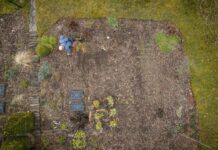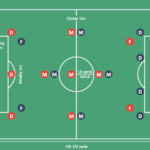
There are over 9,000 golf courses in the United States, and they are some of the most challenging types of landscaping to maintain. The grass needs constant care and attention, and that includes frequent mowing. A little bit of upkeep can go a long way toward keeping your customers happy.
That being said, here are a few tips for ensuring that your course is always in pristine condition.
Cut the Grass Frequently
Grass can grow between 4 to 24 inches if you don’t mow them properly. Mowing the grass is the most important part of golf course maintenance. Mowing the grass too infrequently will lead to dead spots in your mowed areas, while mowing too often can end up scalping your greens and tees.
The best time to mow is just before or during dormancy. That’s when you’ll be able to get a good look at how healthy your turfgrass is, as well as any damage that may have occurred over the summer months. If you wait until springtime, when all the plants are leafing out, it’s easier for you to miss obvious issues like disease or insect damage. That could affect how well your course plays throughout its season.
Pay Attention to the Sand Traps
Sand traps, although important for golf courses to have, can be difficult to maintain. The amount of time that sand traps are used and abused means you’ll need to spend time on them every day. Make sure to rake the sand in each trap before teeing off so that players aren’t running into a pile of debris while they’re trying to take their swings.
Fertilizing is also an important part of caring for your sand traps. You should fertilize once a month during the spring months and once every two months during the fall or winter months. This helps keep weeds from growing in them as well as keeping grass healthy and green throughout the year.
Use Proper Equipment
It’s important to use the proper equipment for the job. If you are mowing a golf course, you should be using a good-quality mower. If you’re fertilizing, using high-quality fertilizer will help your golf course green up in a timely and efficient manner.
Similarly, using high-quality water hoses will ensure that your irrigation system works effectively and efficiently. Finally, if you need weed killer or leaf blowers for your maintenance work on the golf course maintenance crew, they should be top of the line as well.
Keep Carts on the Paths
The best golf cart path designs are well-defined and clearly marked. They should be wide enough for two golf carts to pass each other comfortably but not so wide that they become a racetrack for groups of carts to compete in “cart wars.” The surface should be smooth and free of debris, so it will hold up without potholes or bumps.
The majority of golf courses in the United States use asphalt as their primary surface material when building cart paths. This is the most durable option while also being relatively inexpensive compared with concrete or wood options.
However, asphalt can become slick when wet or covered by snow or ice, especially when there is no drainage system installed under the path. When this happens, some players will choose not to follow the rules and drive through wet areas anyway.
While on the topic of golf carts, you should consider getting golf cart insurance. You never know when or how the golfers might end up damaging your golf carts. When that happens, you’ll be left confused as to what to do about it. Thus, to avoid such confusion, consider getting golf cart insurance so that you don’t have to worry about any damages to your carts.
Clear Trees from the Fairways
Trees are a great addition to a golf course, but they must be properly maintained to create the right conditions for play.
Trees can be a hazard if they block the path of your drive or if they are planted too close to fairways. Shading the course can make it difficult to read the green and make putts, which is why trees mustn’t grow too close together.
A few strategically placed trees around water hazards can help protect your ball from rolling into the said hazard. Trees planted too near tee boxes may block your view of where you’re supposed to hit from, so take care when placing them in these areas.
Mow the Rough at Different Lengths
The first step to maintaining the right rough length is mowing in alternating directions. This will allow you to keep the grass at different heights. Some parts of the rough are taller than others, which helps create a variety of lies. If all of your roughs were cut at an even height, it would be difficult for golfers to play from. That’s because they’d have no way of knowing whether they could play their shot or not without getting up and walking into it.
Provide Maintenance for the Ponds
Ponds provide aesthetic value to a golf course, but they also serve important functions. Ponds are used to control erosion and water the course by capturing rainwater. They can be used as a source of cooling during hot summer months and can be cut into small ponds that allow for increased circulation of air around their edges.
Now that you know the basics of how to maintain your golf course, it’s time to get started. This is not a job for beginners, so don’t worry if you don’t feel confident at first. The most important thing is to start slowly and build up from there. Around 24-25 million people in the U.S. go golfing every year. Thus, whatever you do, you can’t avoid maintenance work on your golf course.
If you can’t manage it all, hire people or specialists who can help you out. However, don’t leave the course unmaintained, for the conditions will only get worse over time.
Read Also : Which Emirates Living Community Is For You?





























































